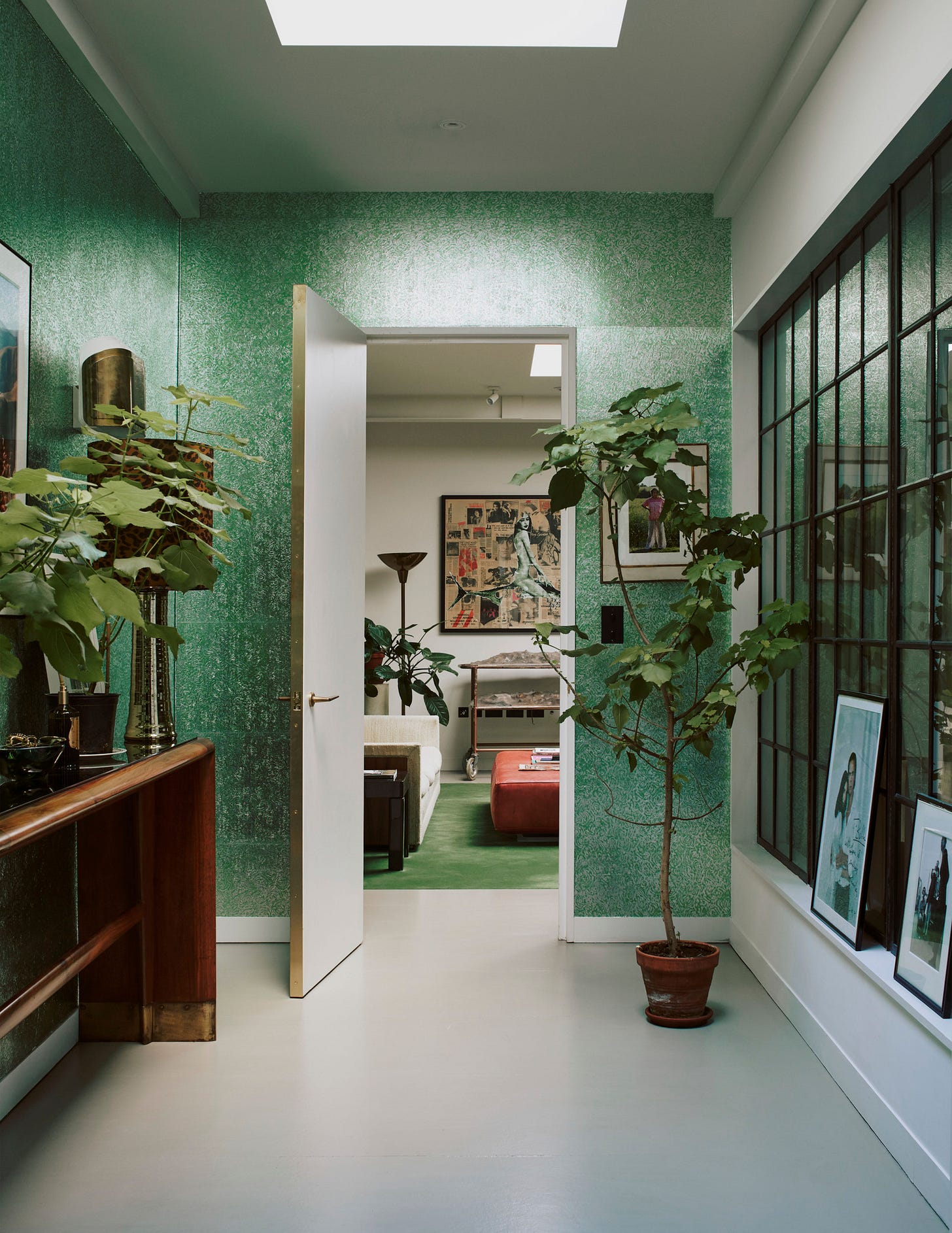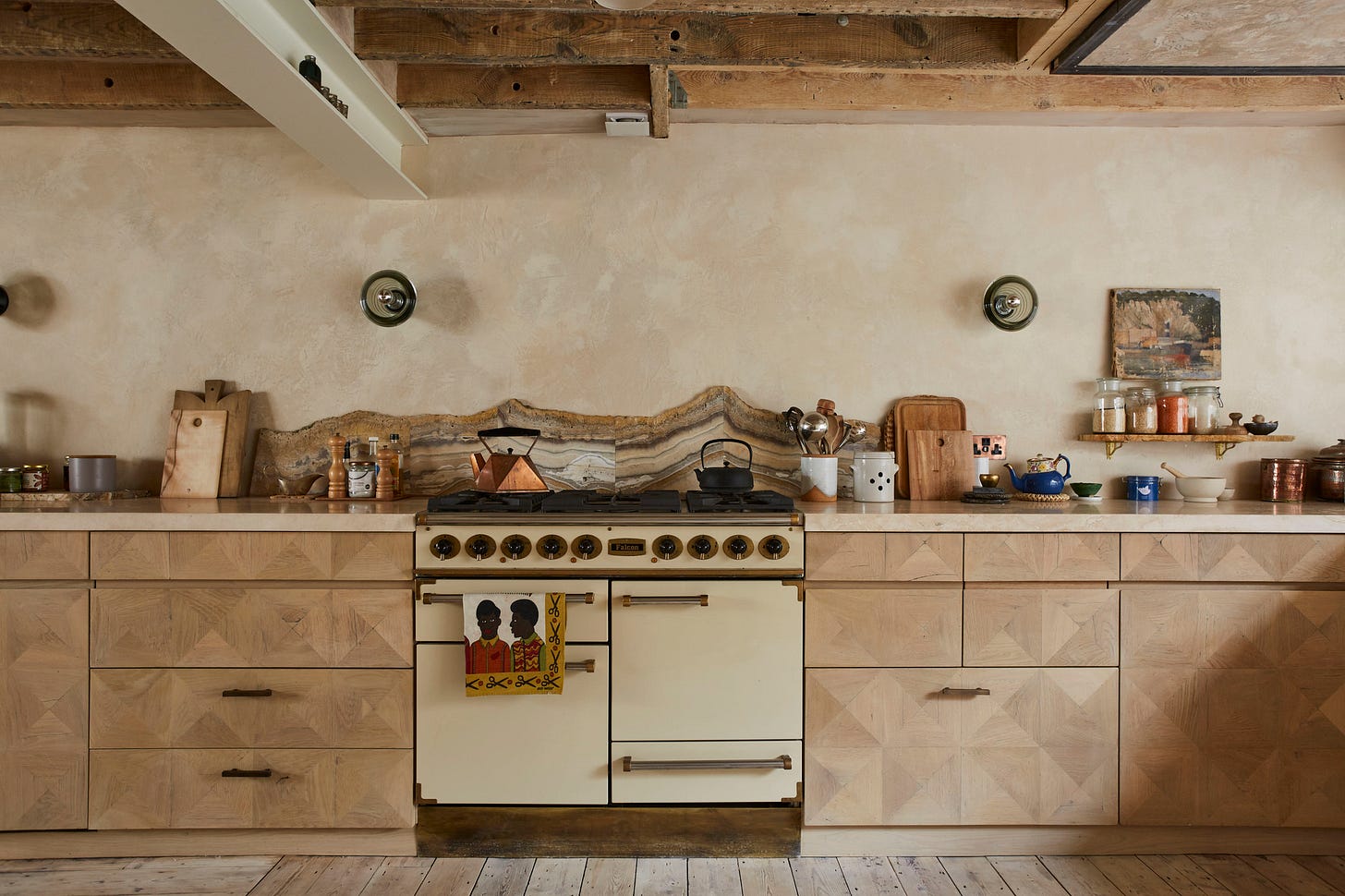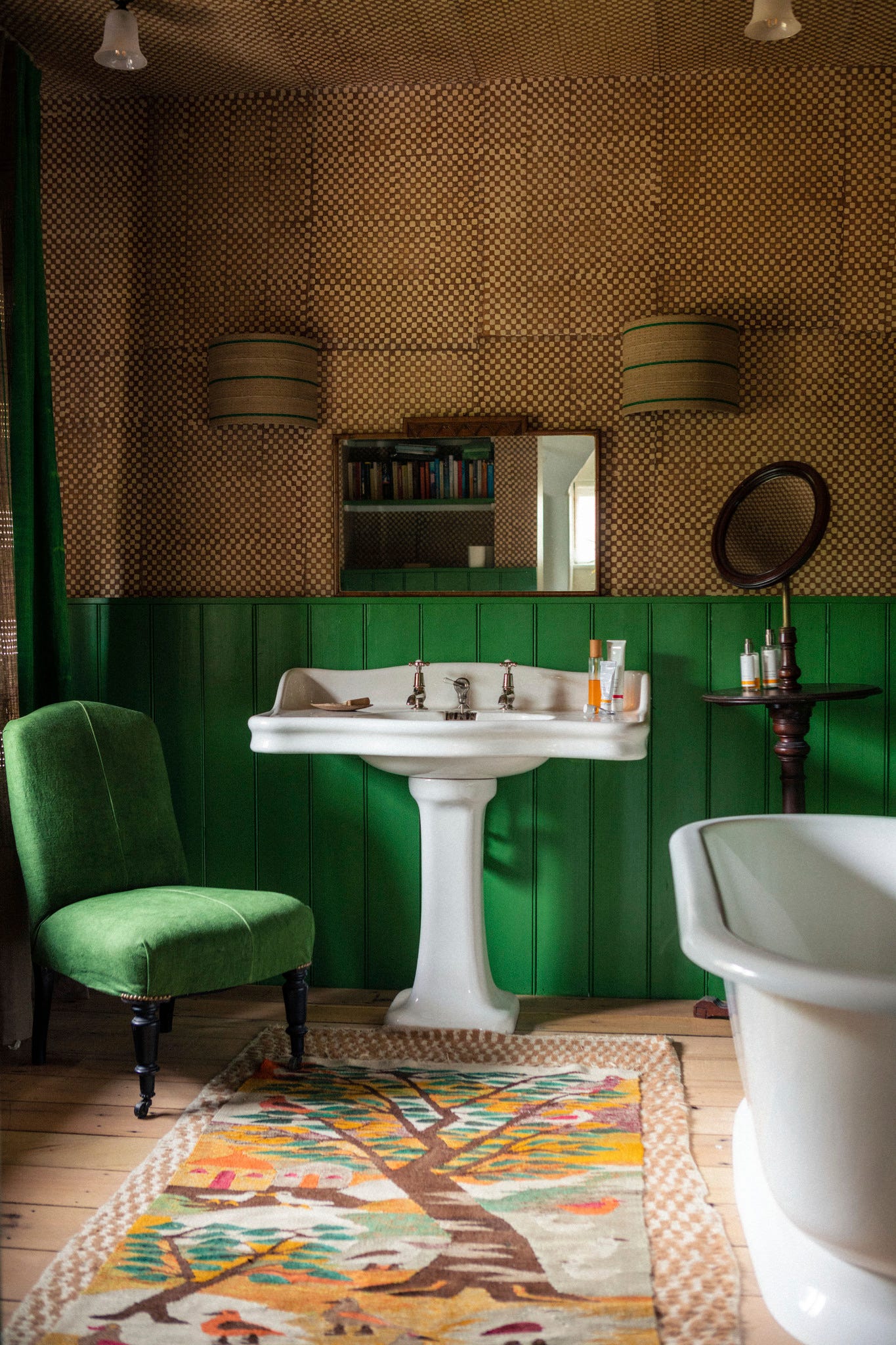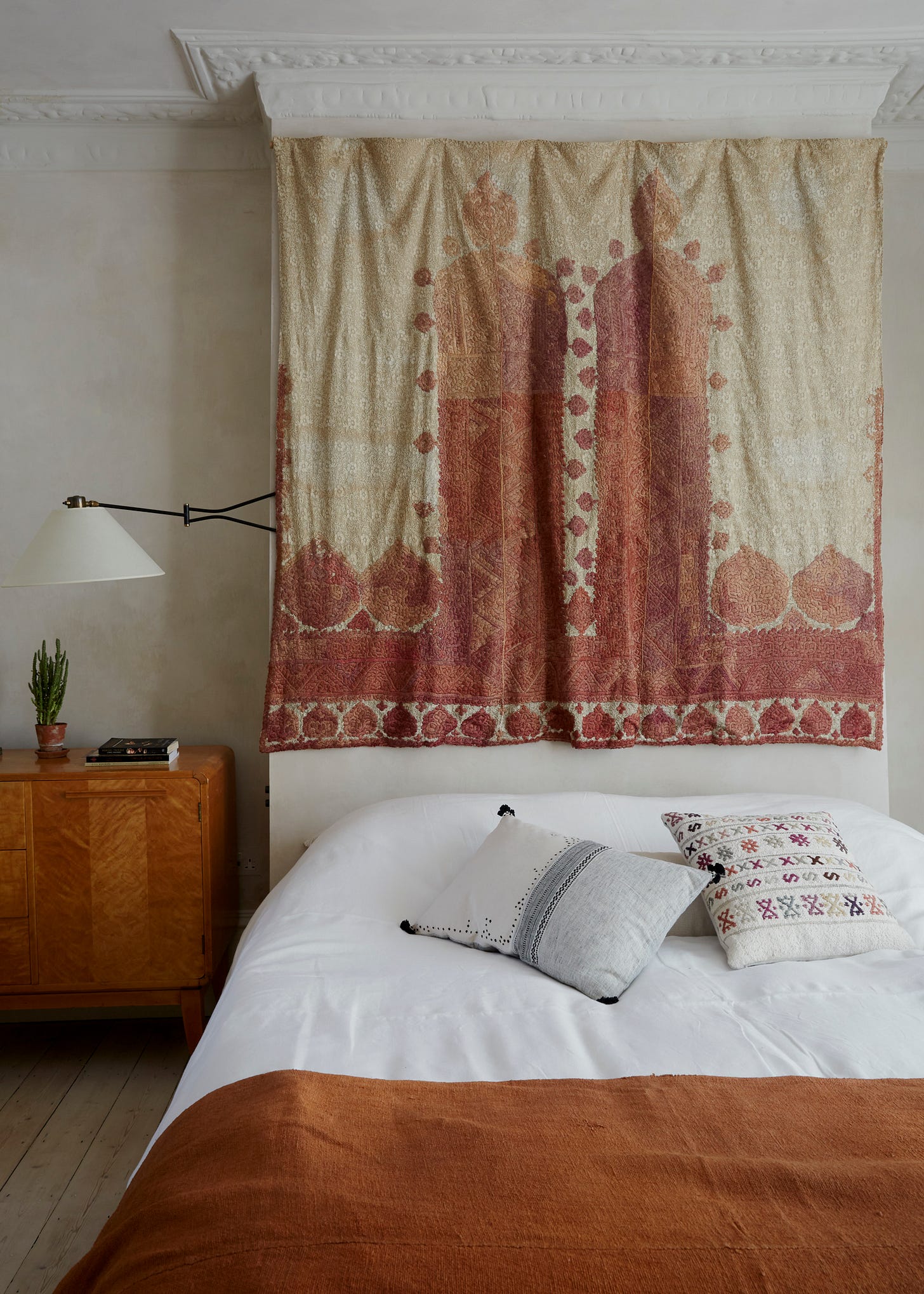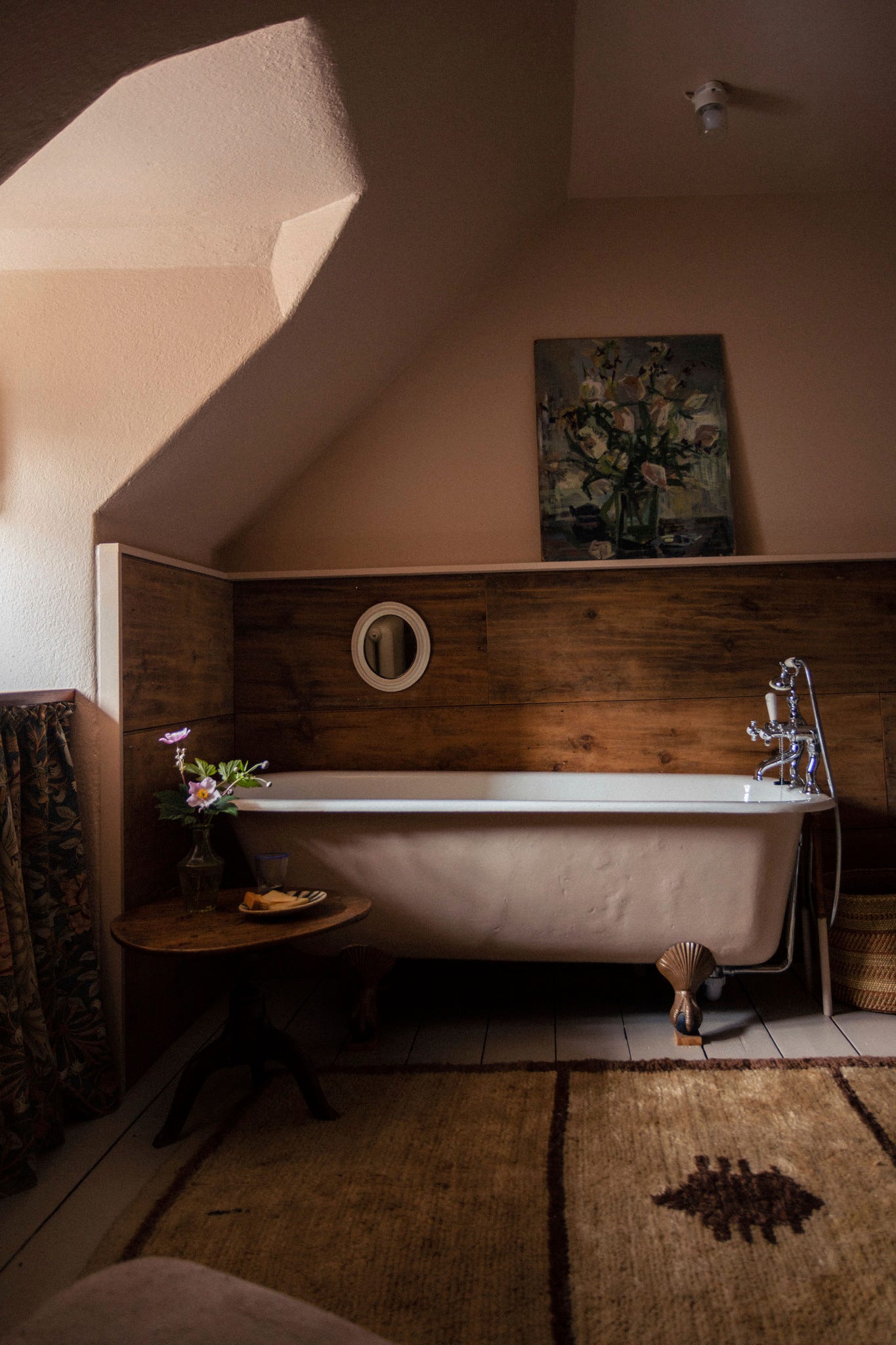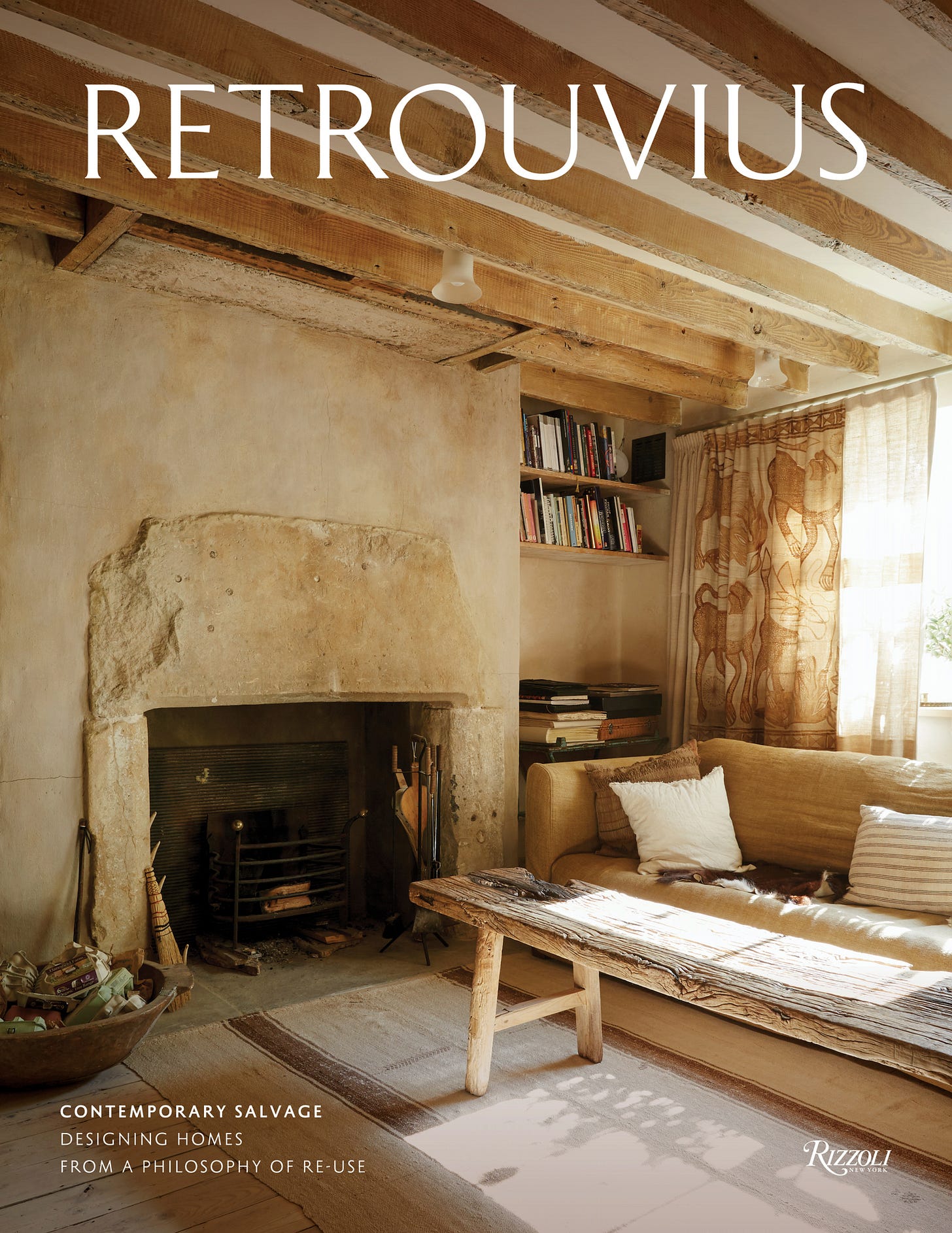Retrouvius
Salvage. Reclamation. Design. Longevity
To Maria Speake, co-founder of the London-based design company Retrouvius, architectural elements that most likely would have found their way onto the trash heap—Victorian windows and dusty doors, reclaimed tiles from old warehouses, stone columns salvaged from ancient buildings, lumber collected from demolished homes, textiles retrieved from old clubs, wooden floors from airports, moldings and hardwood from schools and universities, and iron grills from train stations—are the guiding principle and a point of departure for her prolific interior design practice, feeding the energy of her spaces. In fact, Speake’s unique and entirely personal design language, which she has successfully applied to interior projects worldwide for over three decades, grew from (and was shaped by) the salvaged and the reused, and has solidified her position and identity in the world of interior.
But do not think that Speake’s interiors are rustic, raw, or unrefined; it’s quite the contrary. Her spaces are sophisticated, polished, chic, and entirely contemporary. Still, they are also layered and textured, telling stories that shape the experience, while celebrating the counterbalance, in her words, “to the blandness of newness.” At first sight, her interiors resemble other classic, elegant, and glossy interiors filled with find furniture of the type you regularly see in top shelter magazines, but as you look closer, they are something quite different. They are composed almost entirely of salvaged materials that were reconditioned and intelligently reused. The materials say it all. Speake was recently my guest in ‘Design and Architecture Masterpieces,’ celebrating the monograph ‘Retrouvius: Contemporary Salvage, Designing Homes from a Philosophy of Re-Use.’
Sustainability in interior design was hardly a consideration when Speake and her husband and partner, Adam Hills, founded Retrouvius in 1993. The holistic approach to creating spaces that are not only functional and beautiful, but also environmentally responsible—quite common today—was not widely practiced three decades ago. The idea of taking something unloved and cherishing it, something unvalued and making it precious, giving materials and objects a second life, giving them a shot at immortality, stands at the core of Retrouvius. Hills is responsible for the salvage, which he offers at the Retrouvius shop. “Salvage is manual, slow, unglamorous, and logistically difficult, but it is also immensely rewarding,” he says, expressing the company’s philosophy according to which good materials and well-made things are precious, valuable, and deserving of a second life.
“I did not want to live in a home that looks new,” one of her clients, an Italian fashion executive, told me. I recently visited his flat on Chiltern Street in London. He wished to recreate the same mood of his beloved childhood family apartment in 1970s Italy. The point of departure was a single object: a raffia-and-brass ice bucket designed by Italian Gabriella Crespi, which, to him, summed up the 70s and everything he wanted in his home, capturing personal memories. Speake loves working this way—devising an entire scheme from a single object, which has the potential to “kick off ideas,” in her words. Here, I had the opportunity to experience the Retrouvius oeuvre fully: doors salvaged from an old bank by Sir Edwin Lutyens, largely considered the greatest British architect of the 20th century; a kitchen backsplash made of salvaged onyx; cabinets crafted from reclaimed wood; and a floor made of reused, polished pine boards. The owner’s exquisite design collection, which includes pieces by Carlo Mollino and Tommaso Cimini, makes one feel at home. Materiality stands at the core of Speake’s interiors, and the trick, she reveals, is to forge a new context for the re-used materials, to elevate them into a precious place, to make them “sexy again,” and give them a new life. Often, she uses materials and elements that she would not have designed, but when they are handy, they become a source of inspiration.
Much of this material comes from the Retrouvius shop, managed by Hills, whose role in the company is to rescue and reclaim materials from demolished buildings across London. The approach of the two is always poetic, as bringing the old into the new provides layers of meaning. They met when studying architecture at the Glasgow School of Art in the early 90s. The vision was born in those early days when they began to realize that high-quality materials were not being incorporated into new projects. They started salvaging materials, learning about the types of timber, and the age of door handles and tiles, thereby planting the seeds for Retrouvius. It was the days at the Glasgow School of Art, designed in the early years of the 20th century by Charles Rennie Mackintosh, the city’s architectural hero, that came to shape the notion that not everything has to be the same. Bella Freud, one of Retrouvius’ most loyal clients, writes in the book, Maria’s Signature Style, not to show off. Her style has a calmness built of layers of narrative from an ingenious use of materials, illuminating the philosophy which has won Retrouvius’ place in the pantheon of 21st-century design.
© Retrouvius: Contemporary Salvage: Designing Homes from a Philosophy of Re-Use by Maria Speake, Rizzoli, 2025;




